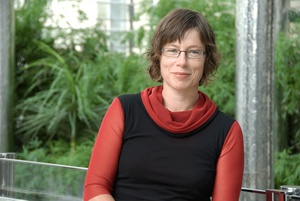Future at stake
We’ve all heard, and many of us have repeated, the refrain that Christchurch has a once-in-a-lifetime opportunity to create a truly sustainable, future-focused city. This is as true now as it was in February 2011. There are both positive and negative signs as the city re-emerges and re-shapes itself. In many ways, there is still so much to play for.>
Improving the health, efficiency and performance of Christchurch’s commercial buildings could, we know, deliver massive dividends to the city in boosting economic performance, enhancing business resilience and profitability, and improving the productivity, health and wellbeing of the people working there. Not to mention the international marketability of a beautiful and sustainability-focused city.

But perhaps inevitably, the reality and the grind of the delays, insurance wrangles and anxiety about business viability has meant that environmental considerations are often taking a back seat.
One massive advantage Christchurch has is a visionary city council that has been for years in the vanguard of understanding and promoting sustainable building. The civic centre itself – a joint venture with Ngai Tahu Property - is New Zealand’s highest rated Green Star building, with a renewable energy system that is quite awe-inspiring. Having this leadership in place – as well as established services and expertise such as its long-running Target Sustainability scheme for business – meant the city was undoubtedly a few steps ahead in being able to articulate and promote the value of a sustainable city. It’s gone so far as to fund the development of an environmental rating tool specifically for Christchurch buildings – the BASE (Building a Sustainable Environment) tool.
But will Christchurch really emerge as a sustainable city of the future?
From the city’s much-publicised (and internationally award-winning) Share an Idea project, came the concept of a ‘pledge’ or commitment scheme for business to align itself with good environmental principles. This has been brought to life through the Legacy campaign, which is being run in partnership with the Council, the New Zealand Green Building Council, Canterbury Employers Chamber of Commerce, and the Property Council.
It has been gratifying to see so many people involved in the industry support this, both large and small firms. And there are new businesses registering their support every week. But to really move into mainstream business consciousness, the voice of commercial tenants will be key – driving developers and consultants to meet the demand.
Short-term cost considerations are most often the barrier to sustainable construction. But the business case more than stacks up in terms of lower operating and life cycle costs, and improved asset value. There’s still a lot of work to do to help educate the industry about the real costs and benefits of green building.
A comprehensive report published just this year by the World Green Building Council shows that green construction doesn’t need to cost more than conventional building, and where there is a cost premium, energy and other savings typically more than make up for that within a reasonable payback period. It finds the cost premium for the majority of certified green buildings is zero per cent to four per cent, markedly different to the perceived cost premium of up to 29 per cent.
Recent New Zealand research into the construction costs of 17 Green Star buildings, shows similar patterns, with some green buildings costing as much as a third less than their conventional counterparts. Global studies also show productivity gains of up to 11 per cent through better ventilation, up to 23 per cent through better lighting, and up to 18 per cent through views and access to the natural outdoors.
In its tender documents for anchor projects, the Council has shown a strong commitment to environmental performance, sending a positive message to local developers. And there are some wonderful projects underway in Christchurch. The Terrace development from Hereford Holdings; Awly Investments’ multi-million dollar Durham Street project, managed by Arrow International; the Kilmore Street Medical Centre, and John Ryder’s Knox Plaza development, are but a few examples of sustainable buildings that will add to the city’s vibrancy, health and prosperity.
As the rebuild ramps up, I’m hopeful that this vision will become the norm, not the exception.










